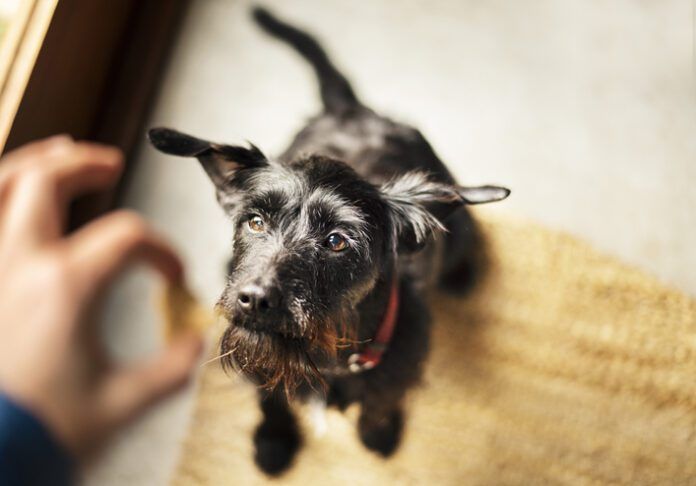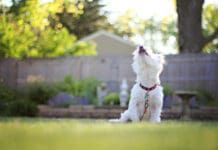Excerpt from Chill Out Fido! by Nan Kené Arthur
Once your dog knows a behavior well, and can perform it in many locations and with many distractions, you can fade the use of your marker signal and rewards. In other words, you don’t need to click and treat every time your dog sits for you. However, it’s also important to pay off every now and then to keep your dog in the game and gambling. “This time might be the time the reward happens, so I’m going to keep doing what I’m doing, just in case.”
Here’s an example of how you can fade the use of treats when using a verbal marker while teaching a behavior like “sit”:
- Ask your dog to “Sit.”
- As his butt hits the ground, say, “Good boy,” give a treat (praise and treat paired together) and release him with a release cue such as, “All done.”
- Ask your dog to sit again, but just say, “Good boy,” without the treat (builds anticipation of the treat), and release him.
- The next time, give the treat after your verbal praise (score!).
- Ask for the sit once again and give the treat again after your verbal praise (score again!).
- Use just the verbal praise for a couple of rounds, and so on until your are only using treats occasionally but still getting good responses from your dog.
- You can also add in other rewards that your dog likes, such as asking him to sit and when he does, saying “Good boy,” and throwing a ball or playing a little tug. You could also open a door, pet him, or allow him access to something like the car if he enjoys car rides. These are called “real life” rewards, and anything your dog wants or likes can and should become a reward as you progress in your training.
Reducing the use of food rewards should be a goal, but always be ready to go back to using more or better treats when you add more distractions, duration, or distance to a behavior – at least until your dog has a clear understanding that this is the same training as before, just in different context. If a well-trained behavior falls apart when you go out into the world, that’s information for you. It’s time to help your dog by going back to food – usually a high value reward.
Once your dog demonstrates that he can stay focused on the task at hand, you can switch to a lower value food as long as you maintain the successes you achieved with the high-value food in that same location or with the same distractions.
Once you have decided to use fewer treats, bear in mind that never using treats again would be like asking yourself to give up ice cream, cake, or other goodies. There is nothing wrong with using food to reward your dog, just use it to your advantage – to help him get better with his skills. Sometimes it is fun to give your dog a treat, just like it is fun for us to get unexpected rewards. Also, if your dog does something really amazing that you would like repeated, then food is the best paycheck you can give him to keep him in your employment.
For more advice on training your dog, purchase Chill Out Fido! from Whole Dog Journal.






